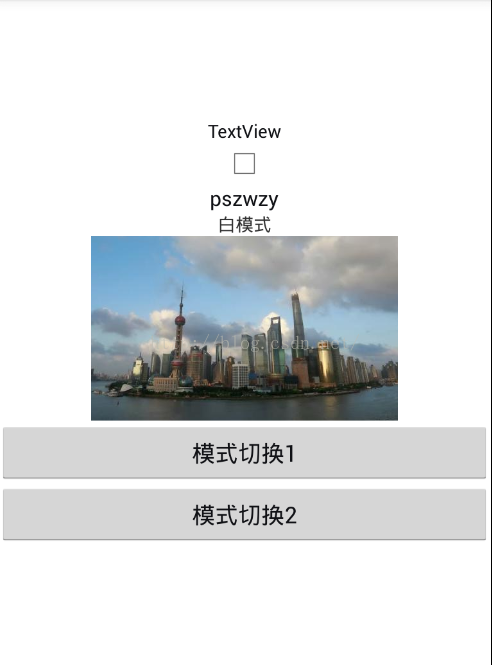編輯:關於Android編程
一、如何顯示assets/license.txt(中文)的內容?
(1)方法1:InputStream.available()得到字節數,然後一次讀取完。
private String readUserAgreementFromAsset(String assetName) {
String content ="";
try {
InputStream is= getAssets().open(assetName);
if (is != null){
DataInputStream dIs = newDataInputStream(is);
intlength = dIs.available();
byte[] buffer = new byte[length];
dIs.read(buffer);
content= EncodingUtils.getString(buffer, "UTF-8");
is.close();
}
} catch (IOException e) {
e.printStackTrace();
}
return content;
}
(2)方法2:用BufferedReader.readLine()行讀取再加換行符,最後用StringBuilder.append()連接成字符串。
A.以下是先行讀取再轉碼UTF8:
private String readUserAgreementFromAsset(String assetName) {
StringBuilder sb = newStringBuilder("");
String content ="";
try {
InputStream is= getAssets().open(assetName);
if (is != null){
BufferedReader d = newBufferedReader(new InputStreamReader(is));
while (d.ready()) {
sb.append(d.readLine() +"\n");
}
content =EncodingUtils.getString(sb.toString().getBytes(), "UTF-8");
is.close();
}
} catch (IOException e) {
e.printStackTrace();
}
return content;
}
B.以下是InputStreamReader先指定以UTF8讀取文件,再進行讀取讀取操作:
private String readUserAgreementFromAsset(String assetName) {
StringBuilder sb = newStringBuilder("");
String content ="";
try {
InputStream is= getAssets().open(assetName);
if (is != null){
BufferedReaderd = new BufferedReader(new InputStreamReader(is, "UTF-8"));
while(d.ready()) {
sb.append(d.readLine() +"\n");
}
content= sb.toString();
is.close();
}
} catch (IOException e) {
e.printStackTrace();
}
return content;
}
另外,UTF8轉碼也可以用new String(buffer, “utf-8”)。
(3)替代方法3:將license.txt內容作為string.xml的string,如:
<stringname="license_content">用戶協議
\n \n一、服務條款的確認和接納
\n…
</string>
需要注意的是:string裡需要加\n作為換行符,原來txt裡的換行符在取得string後無效。
不可取方法4:每次讀取4096字節,以UTF8轉碼,最後連接字符串。因為漢字可能被截斷,導致4096的倍數附近的中文可能出現亂碼。
private String readUserAgreementFromAsset(String assetName) {
StringBuilder sb = newStringBuilder("");
String content ="";
try {
InputStream is= getAssets().open(assetName);
if (is != null){
DataInputStream dIs = new DataInputStream(is);
byte[] buffer = new byte[1024*4];
int length = 0;
while ((length = dIs.read(buffer)) >0) {
content =EncodingUtils.getString(buffer, 0, length, "UTF-8");
sb.append(content);
}
is.close();
}
} catch (IOException e) {
e.printStackTrace();
}
return sb.toString();
}
二、Android中讀寫文件
(1) 從resource中的raw文件夾中獲取文件並讀取數據(資源文件只能讀不能寫,\res\raw\test.txt)
String res = "";
try{
InputStream in = getResources().openRawResource(R.raw.test);
int length = in.available();
byte [] buffer = newbyte[length];
in.read(buffer);
res = EncodingUtils.getString(buffer,"UTF-8");//選擇合適的編碼,如果不調整會亂碼
in.close();
}catch(Exception e){
e.printStackTrace();
}
(2) 從asset中獲取文件並讀取數據(資源文件只能讀不能寫,\assets\test.txt)
與raw文件夾類似,只是:
InputStream is = getAssets().open(“test.txt”);
(3) 私有文件夾下的文件存取(/data/data/包名/files/test.txt)
使用openFileOutput寫文件:
public void writeFileData(String fileName,String message){
try{
FileOutputStream fout =openFileOutput(fileName,MODE_PRIVATE);
byte [] bytes =message.getBytes();
fout.write(bytes);
fout.close();
}
catch(Exception e){
e.printStackTrace();
}
}
使用openFileInput讀文件:
public String readFileData(String fileName){
String str = “”;
try{
FileInputStream fin =openFileInput(fileName);
int length = in.available();
byte [] bytes = newbyte[length];
fin.read(bytes);
str = EncodingUtils.getString(bytes,"UTF-8");
fin.close();
}
catch(Exception e){
e.printStackTrace();
}
return str;
}
(4) sdcard目錄下的文件存取(/mnt/sdcard/)
使用FileOutputStream寫文件:
public void writeFile2Sdcard(String fileName,String message){
try{
FileOutputStream fout = new FileOutputStream(fileName);
byte [] bytes =message.getBytes();
fout.write(bytes);
fout.close();
}
catch(Exception e){
e.printStackTrace();
}
}
使用FileInputStream讀文件:
public String readFileFromSdcard(String fileName){
String res="";
try{
FileInputStream fin = newFileInputStream(fileName);
int length =fin.available();
byte [] buffer = newbyte[length];
fin.read(buffer);
res =EncodingUtils.getString(buffer, "UTF-8");
fin.close();
}
catch(Exception e){
e.printStackTrace();
}
return res;
}
 Android實現千變萬化的ViewPager切換動畫
Android實現千變萬化的ViewPager切換動畫
之前寫過一篇文章:Android自定義ViewPager實現個性化的圖片切換效果,有朋友提出,ViewPager自帶了一個setPageTransformer用於設置切換
 使用RecyclerView添加Header和Footer的方法
使用RecyclerView添加Header和Footer的方法
RecyclerView與ListView原理是類似的:都是僅僅維護少量的View並且可以展示大量的數據集。RecyclerView用以下兩種方式簡化了數據的展示和處理:
 android 夜間模式的實現
android 夜間模式的實現
注:急速開發的人,可以直接看第三種實現方式1:修改theme,重啟activity(Google自家在內的很多應用都是采用此種方式實現夜間模式的)優點:正兒八經的夜間模式
 Android 造炫目的圓形菜單 秒秒鐘高仿建行圓形菜單
Android 造炫目的圓形菜單 秒秒鐘高仿建行圓形菜單
1、概述 今天打開建行看存款,一看傷心欲絕,再看:我擦,這個圓形菜單挺炫。於是,為了掩蓋我悲痛的心情,我決定是實現這個效果。好了,其實還有個原因,記得我初學